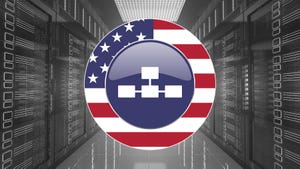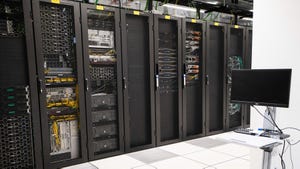How to Manage Data Center Workplace Safety RisksHow to Manage Data Center Workplace Safety Risks
Data center workplace safety is even more crucial than protecting IT assets. Here’s how to mitigate risks for the people keeping them running.

When data center professionals discuss risk management, the focus is often on protecting servers and IT infrastructure. After all, data centers exist to ensure the uptime and security of digital assets. But data center workplace safety is just as critical – humans, not just hardware, face significant risks inside these high-powered environments.
From electrical hazards to fire suppression systems and extreme temperatures, data centers present unique safety challenges that must be addressed to protect employees and contractors. This article explores the key workplace safety risks in data centers and strategies for mitigating them.
Data Centers and Workplace Safety
Although the presence of workers inside most data centers is limited, data center technicians work on-site at least part of the time in most facilities. They perform physical tasks, such as setting up servers and plugging in cables, that admins can’t complete remotely.
In addition, various other types of workers may occasionally enter data centers. HVAC technicians must install and maintain the systems that keep servers cool. Security staff may work on-site to manage physical security threats. Facilities workers periodically perform maintenance tasks on the physical data center structure.
To keep these employees safe, data center operators must provide a safe working environment. Not only is ensuring data center safety the right thing to do, but it’s also a compliance requirement in many places – including the U.S., where the Occupational Safety and Health Administration, or OSHA, enforces a variety of regulations that impact data centers.

Beyond IT security, data center workplace safety measures help mitigate risks for personnel working in high-risk environments.
Common Data Center Workplace Safety Risks
While data centers may not be as risky as certain other types of work environments, like construction sites or factory floors, they are subject to special types of hazards, which data center operators must mitigate to provide a safe work environment.
The most common data center safety hazards include:
1. Electrical Hazards
Data centers consume enormous amounts of electricity, which is distributed through a complex network of wires. Improperly insulated wires, loose connections, or faulty circuit breakers could create hazards that harm workers – and given the high voltage that flows through data center mains, the impact of a shock could be catastrophic.
2. Tripping Hazards
Managing hazards that could cause workers to trip or fall is one of OSHA’s key focuses. Given that data centers often include sprawling networks of electrical and network cables, they can be a safety nightmare from a tripping-hazard standpoint.
3. Excess Heat
Data centers can be very hot work environments due to the high volumes of heat created by IT equipment. Although data center cooling systems are usually good at dissipating heat from IT systems, they don’t always cool down the ambient environment. This is particularly challenging with advanced cooling systems like direct-to-chip cooling, which removes heat from servers but doesn’t cool the overall room.
The result can be work environments that are quite warm – possibly warmer than the 80 degree Fahrenheit limit that OSHA recommends for avoiding heat-related hazards – and pose safety risks to technicians who need to operate in them for extended periods.
4. Heavy Objects
Individual servers are not typically very heavy, but a rack full of servers could weigh several hundred pounds. Certain other types of IT equipment commonly found in data centers, such as UPS units, can weigh over a thousand pounds in some cases.
Heavy objects like these pose safety risks to staff who need to move them. They can also be hazardous if they fall over, which overloaded or top-heavy server racks could potentially do if they are not properly secured.
How to Manage Workplace Safety Risks In Data Centers
While data center safety hazards come in many forms, the good news is that they’re all relatively simple to manage. To minimize the potential for workplace safety risks, data center operators should consider the best practices:
Regularly inspect electrical systems to identify faulty or failing cables and equipment that could harm workers.
Organize cables Doing so will not only make it easier to manage cables but will also help prevent the cable sprawl that could lead to tripping accidents.
When designing HVAC systems, consider ambient workplace temperatures in addition to IT equipment temperatures.
If server room temperatures are higher than approximately 80 degrees Fahrenheit, ensure that technicians who need to work in them for extended periods follow guidance (such as OSHA’s heat guide) for operating in high-temperature environments.
Develop guidelines for employees and contractors to govern how they manage heavy or fall-prone objects.
Ensure that server racks are mounted to the floor or (if that’s not possible) each other to minimize the risk of falling.
Investing in these measures will not only ensure compliance with workplace safety regulations but, most importantly, help workers perform their jobs safely and return home unharmed.
About the Author
You May Also Like









